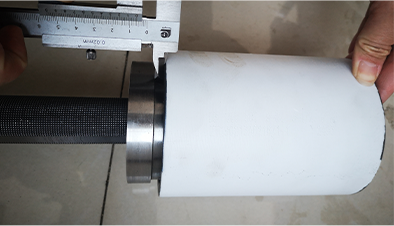- Afrikaans
- Albanian
- Amharic
- Arabic
- Armenian
- Azerbaijani
- Basque
- Belarusian
- Bengali
- Bosnian
- Bulgarian
- Catalan
- Cebuano
- Corsican
- Croatian
- Czech
- Danish
- Dutch
- English
- Esperanto
- Estonian
- Finnish
- French
- Frisian
- Galician
- Georgian
- German
- Greek
- Gujarati
- Haitian Creole
- hausa
- hawaiian
- Hebrew
- Hindi
- Miao
- Hungarian
- Icelandic
- igbo
- Indonesian
- irish
- Italian
- Japanese
- Javanese
- Kannada
- kazakh
- Khmer
- Rwandese
- Korean
- Kurdish
- Kyrgyz
- Lao
- Latin
- Latvian
- Lithuanian
- Luxembourgish
- Macedonian
- Malgashi
- Malay
- Malayalam
- Maltese
- Maori
- Marathi
- Mongolian
- Myanmar
- Nepali
- Norwegian
- Norwegian
- Occitan
- Pashto
- Persian
- Polish
- Portuguese
- Punjabi
- Romanian
- Russian
- Samoan
- Scottish Gaelic
- Serbian
- Sesotho
- Shona
- Sindhi
- Sinhala
- Slovak
- Slovenian
- Somali
- Spanish
- Sundanese
- Swahili
- Swedish
- Tagalog
- Tajik
- Tamil
- Tatar
- Telugu
- Thai
- Turkish
- Turkmen
- Ukrainian
- Urdu
- Uighur
- Uzbek
- Vietnamese
- Welsh
- Bantu
- Yiddish
- Yoruba
- Zulu
Understanding Bull Plug Dimensions and Their Importance in Various Applications
Understanding Bull Plug Dimensions A Comprehensive Guide
In the realm of industrial applications, understanding the proper components and their dimensions is crucial for ensuring efficiency and safety. One such component that plays an important role in various systems is the bull plug. While it may seem like a minor part, especially when compared to other equipment, the significance of bull plugs cannot be understated, particularly regarding their dimensions. In this article, we will delve into what bull plugs are, their dimensions, and why they matter in practical applications.
What are Bull Plugs?
Bull plugs are fittings used to seal the end of a pipe, preventing the escape of fluids or gases from an open pipe end. They can be found in many different industries, including oil and gas, water treatment, and construction. Typically made of materials such as metal, plastic, or composite materials, bull plugs ensure that the systems they are part of operate efficiently and safely.
The design of a bull plug generally resembles that of a typical plug or cap, which allows it to fit snugly into the pipe. The effectiveness of a bull plug hinges on the precision of its dimensions, which include the diameter, length, and threading specifications.
Key Dimensions of Bull Plugs
1. Diameter The diameter is perhaps the most critical dimension when selecting a bull plug. It must match the diameter of the pipe it is intended to seal. Bull plugs come in various sizes, ranging from a few millimeters for small pipes to several inches for larger industrial applications. An inappropriate diameter can result in leaks, which may compromise the system's operation and safety.
2. Length The length of a bull plug can also vary, affecting how deeply the plug will fit into the pipe. A plug that is too short may not provide an adequate seal, while one that is excessively long might make installation or removal difficult. The ideal length ensures that the plug sits securely in place without causing any issues.
bull plug dimensions

3. Threading Many bull plugs feature external threads that allow them to screw into a corresponding threaded pipe. Understanding the threading specifications—such as diameter, pitch, and type (NPT, BSP, etc.)—is essential for a successful fit. Incorrect threading can thwart installation efforts and lead to system failures.
4. Material Thickness The thickness of the material used to create the bull plug is also a dimension worth considering. A thicker material generally contributes to increased durability, helping the plug to resist pressure and temperature variations. It ensures longevity, particularly in high-demand environments.
Why Bull Plug Dimensions Matter
The dimensions of bull plugs are crucial for various reasons. A proper fit ensures that the seal is effective, preventing unwanted leaks. Leakages can lead to significant financial losses in industrial settings due to wasted resources and potential environmental hazards. In addition, the right dimensions can reduce the likelihood of accidents caused by pressure build-up or fluid escape.
In maintenance and operational scenarios, the correct dimensions also simplify installation and removal processes. An ill-fitting bull plug may require additional tools or force to remove, leading to injury or equipment damage. Furthermore, having the right dimensions can vastly improve the overall efficiency of the system by maintaining consistent pressure and flow rates.
Conclusion
In conclusion, while bull plugs may seem like a simple and unassuming component of industrial systems, their dimensions are of utmost importance. Understanding the key measurements—diameter, length, threading, and material thickness—can make a significant difference in the performance and safety of a system. Whether you are involved in the design, installation, or maintenance of industrial applications, paying close attention to the specifications of bull plugs will aid in achieving optimal outcomes. By ensuring the correct fit of bull plugs, industries can enhance operational efficiency, safeguard the environment, and maintain safety standards, making it a fundamental aspect of industrial practice.
-
Tubing Pup Joints: Essential Components for Oil and Gas OperationsNewsJul.10,2025
-
Pup Joints: Essential Components for Reliable Drilling OperationsNewsJul.10,2025
-
Pipe Couplings: Connecting Your World EfficientlyNewsJul.10,2025
-
Mastering Oilfield Operations with Quality Tubing and CasingNewsJul.10,2025
-
High-Quality Casing Couplings for Every NeedNewsJul.10,2025
-
Boost Your Drilling Efficiency with Premium Crossover Tools & Seating NipplesNewsJul.10,2025







